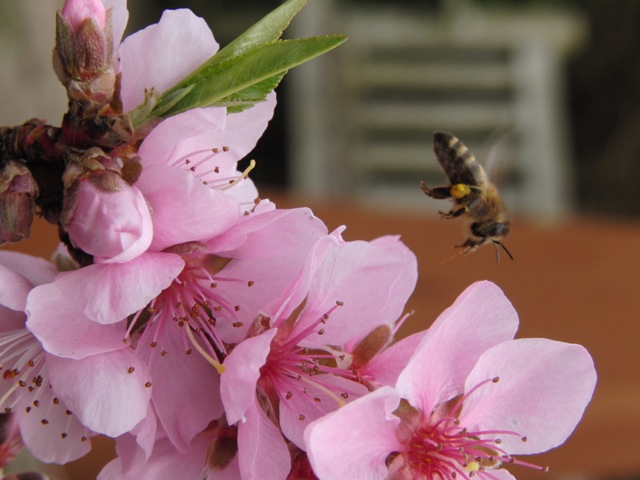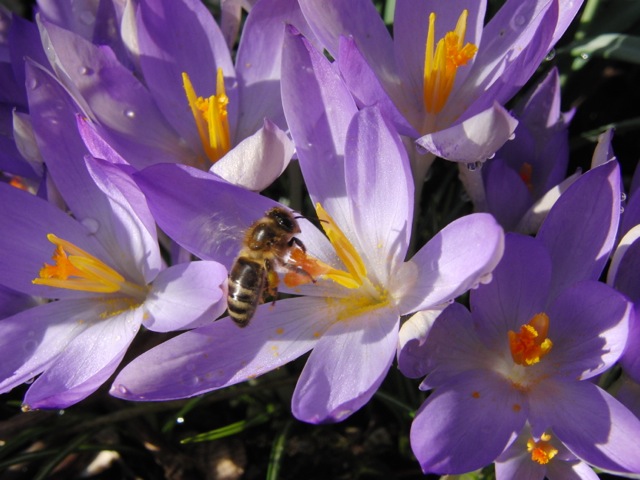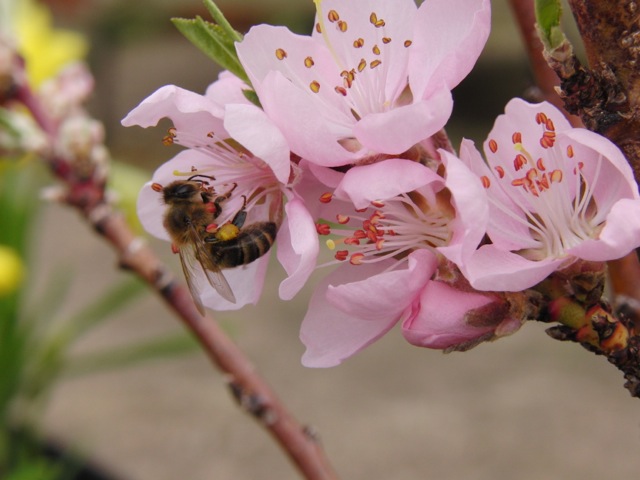
Hartley BeanFeast March 2014
It’s no secret that I’m addicted to bees. I just can’t help talking about nature’s little heroes, or more accurately heroines, at every opportunity.
Last week I met a small boy who started asking me very grown-up questions about bees and it made me realise how much bees are taken for granted and how little many people know about them. How on earth are children going to learn about bees if adults are unaware of their value and don’t know the basics. It was lovely to be able to give him grown up, honest answers about bees and he spent some time thinking about what I was telling him.
For example honey. It’s usually the first question you hear when you tell someone you have bees – “How much honey do you get?” My usual reply is that honey is the bees’ food and I leave it for them. It’s usually met with complete surprise. Many people have no idea that honey is the food that bees make and store all summer to keep them alive all winter. It’s their medicine, their food and their fuel. Honey is made from nectar, collected from hundreds of thousands of flowers by each worker bee.

Under Glass
What has this got to do with greenhouses? Well I’m currently on a mission to get everyone growing for bees and the greenhouse is the perfect place to start. Most gardens and communities have enough floral forage to provide the natural balance of wild and domesticated bees of all sorts, as well as butterflies and moths, with pollen and nectar in summer. But it’s February and March when the honeybees start flying and the solitaries and bumbles break their hibernation, that they really need help.
Many gardens already have winter flowering shrubs like Mahonia, winter honeysuckle, viburnum tinus and viburnum bodnatense ‘dawn’, as well as hazel, willow, birch and other trees with pollen rich catkins. Banks of naturalised snowdrops, narcissi, species tulips and crocus provide pollen and nectar for early emerging pollinators, but as gardeners and greenhouse owners we really can do more to supplement their diet at both ends of the season.
Potted early flowerers, such as peaches, apricots and nectarines, sheltered in the greenhouse for the winter, provide essential early nectar for our bees and butterflies. On sunny days, bring them out of the greenhouse for the best part of the day and return them protected climes of the glasshouse before the sun goes down. But don’t miss the performance. Within minutes of placing your flower laden plants outside, the pretty pink flags laced with exquisite nectar, quickly attract queen bumbles and dozens of worker bees all harvesting the precious liquid to feed their families.
It’s a living larder of vital nourishment to support these essential creatures and an absolute joy to observe. And the side effect is that these beautiful humming insects are making fruit as they work, pollinating every flower with precious pollen as they move from flower to flower. It’s quite simply a magical co-existence and one that we often take for granted.

Time to Sow and Grow
For late summer bee forage, greenhouse gardeners have plenty of time to sow and grow now. Make 2014 the year of the bee in your garden and do what you can to support nature. Make a decision to stop using pesticides. Anything designed to kill an insect cannot tell the difference between a good bug (bees, butterflies, ladybirds and hoverflies etc.) and bad bugs (vine weevils, aphids, lily beetles and the rest), it’s a poison that will kill good bugs and bad bugs how ever careful you are. In the greenhouse choose to use biological controls, barriers and traps if necessary and monitor daily for any signs of problems.
Spring sown annuals can create swaths of pollen and nectar rich flowers to extend the season. Sow them now in pots and modules and pot them up when they are large enough to handle. One packet of seed can make hundreds of plants not only to transform your garden, but also to create the perfect forage for bees. Choose open flowers with easy to access nectaries and pollen bearing anthers such as sunflowers, calendula, rudbeckias, echinacea. Look out for plants that replenish their nectaries regularly with sweet, delicious nectar to entice the bees to pollinate them such as borage, phacelia and echium and include plants with names that suggest they are good for the bees such as honey wort and bee balm.
Look out for special seed mixes of plants that attract butterflies and bees. Choose organic seed wherever possible. Avoid any that have been treated with pesticides – check the packets carefully. Get them sown in good quality seed compost, preferably organic and nurture them as they grow. Share the results with friends and neighbours, encouraging the whole community to grow more for our bees. Without the pollinators the planet has little future and the supermarket shelves will be bare of not just honey but a third of the food that we eat. Think about that. It’s a scary thought.
Commercial beekeepers replace the bees’ honey with sugar syrup that the bees can feed on instead. The trouble is that it lacks the ‘flower power’ of nectar and many of the special ingredients that we revere in honey. Not only that, but many believe it makes the bees sick, weakening them at a time when they need as much help as they can get. Honey is valued for it’s healing powers and maybe it’s time to change our attitude to this precious liquid. Instead of pouring it on your cornflakes, isn’t it time to consider it as a medicine and give it and the bees the respect they deserve?










